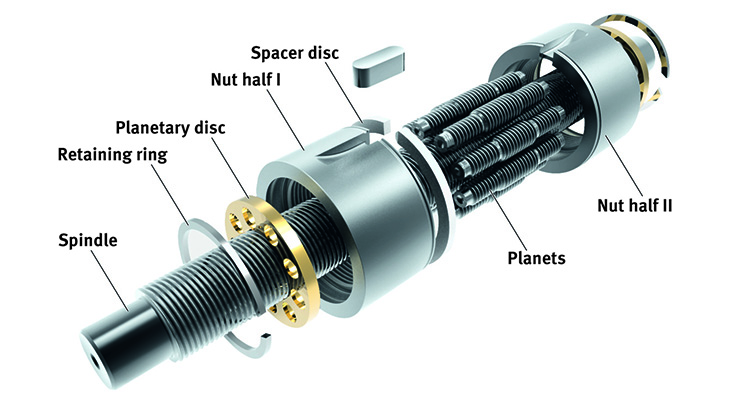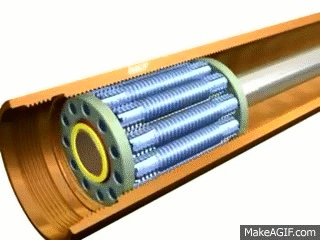You are using an out of date browser. It may not display this or other websites correctly.
You should upgrade or use an alternative browser.
You should upgrade or use an alternative browser.
Jeep/ATV winch for Elevator? What do you think?
- Thread starter svetz
- Start date
Q-Dog
¯\_(ツ)_/¯
At least it is only a 6 or 7 foot drop when it fails.
svetz
Works in theory! Practice? That's something else
... [eddie currents are ] a very very elegant solution for a lot of reasonsbut the problem is cost in magnets and copper...
| So, I couldn't just superglue $20 worth of pennies and the magnets off the fridge? Well shoot... I do like the idea of detaching the cable to do a safe emergency descent if you're otherwise stuck. You could have one of those detach pulls like you see on garage door openers to manually open the garage door. ;-) | 
|
Aluminum should still work and is 1/4 the cost ... although you'd probably need twice as much (wonder if there are any new super cheap high conductivity sheet-like materials, some sort of Graphene?). Pity silver is so expensive. As for the magnet... how about an electro-magnet? Not sure how you'd reliably automatically trigger it during an unintended descent (a mechanical acceleration switch?) so it would be fail-safe (brakes generally work the other way, that is the break is on when there's no current).
She'd probably be sensitive about that. Preferably we could figure out something to reduce the amount of freefall.At least it is only a 6 or 7 foot drop when it fails.
Last edited:
As for the magnet... how about an electro-magnet? Not sure how you'd reliably automatically trigger it during an unintended descent (a mechanical acceleration switch?) so it would be fail-safe (brakes generally work the other way, that is the break is on when there's no current).
As you're stating, an elevator brake works the other way, and for a good reason... --> safety, as always ^^
An electromagnet wouldn't be safe enough to me, you need permanent magnet(s).
Last edited:
svetz
Works in theory! Practice? That's something else
Saw an interesting DIY elevator where they used a fall arrestor as a secondary safety mechanism (like a centrifugal clutch or seat belt). The follow-up had a number of changes suggested by viewers and was interesting. Found you can also get them with a rip-cord, to allow a slow descent which I really like as you won't be trapped in a suspended elevator.
While cool, did a little looking into the fall arrestors, and they're pretty brutal, a class A takes 24" to fall -- so a two foot drop. Although in the videos it's like three inches... so hmmm.
While cool, did a little looking into the fall arrestors, and they're pretty brutal, a class A takes 24" to fall -- so a two foot drop. Although in the videos it's like three inches... so hmmm.
Last edited:
Aaron_85
New Member
How attached to the house is she?
Swap her home out for a single story one with no stairs. Or apartment/home/unit/something with a lift in the building already.
Swap her home out for a single story one with no stairs. Or apartment/home/unit/something with a lift in the building already.
svetz
Works in theory! Practice? That's something else
Sure, just throw common sense out there. ;-)
Her stuff just arrived at the new house (the one that could use an elevator) Sunday and we've been unboxing / assembling this week, bad planning I know. Just assumed an elevator would be a reasonable cost. Considering how traumatic this move has been, I doubt she has another one in her.
You know how your IQ goes down as you get more tired? I'm a poster for it. I'm a mess of minor injuries, all of them stupid that happened long after I was ready to quit for the day (e.g., cut the rivets out of the "security gate" in the mailbox (too hard for her to operate) and burned my fingers on (you guessed it) a hot rivet).
Her stuff just arrived at the new house (the one that could use an elevator) Sunday and we've been unboxing / assembling this week, bad planning I know. Just assumed an elevator would be a reasonable cost. Considering how traumatic this move has been, I doubt she has another one in her.
You know how your IQ goes down as you get more tired? I'm a poster for it. I'm a mess of minor injuries, all of them stupid that happened long after I was ready to quit for the day (e.g., cut the rivets out of the "security gate" in the mailbox (too hard for her to operate) and burned my fingers on (you guessed it) a hot rivet).
curiouscarbon
Science Penguin
- Joined
- Jun 29, 2020
- Messages
- 3,023
u deserve protective equipment?
svetz
Works in theory! Practice? That's something else
I was looking at a commercial system to see what they did for the main safety feature. Surprised to see it was like a garage door, that is two wires (one on each side) suspend the car from a single shaft. No springs, the motor was worm-gear driven so no slippage and if one cable breaks the other can hold the whole load. Couldn't tell, but it probably had drum brakes too. Interestingly, the drums the wire cables wrapped around were grooved so they wouldn't overlap like you'd see in a hoist/winch (which was reported to be a problem in one of the videos). Also had a hefty diameter (4"), so each turn would be about a foot of lift and 8 or so winds.
Update: looking as the ASME requirements for lifts, some interesting things in here. The drum mentioned above being grooved... mandatory for "ropes" (5.3.16). Looks like two cables on a single shaft is okay too.
Update: looking as the ASME requirements for lifts, some interesting things in here. The drum mentioned above being grooved... mandatory for "ropes" (5.3.16). Looks like two cables on a single shaft is okay too.
Last edited:
FWIW My brother and I got one of these for my mother after she had a stroke.
My dad is still kicking at 93 ( WW II vet ) he uses it for laundry hauling laundry
Up and down the stairs, theirs is an interior model but the outdoor one looks the same.
 www.acornstairlifts.com
Pretty simple installation, lag bolts into the tread. 110 v wall plug, I can't remember but I'm
www.acornstairlifts.com
Pretty simple installation, lag bolts into the tread. 110 v wall plug, I can't remember but I'm
Pretty sure it has an internal battery for power failures. My guess is the most expensive
Part of this is the liability insurance.
My dad is still kicking at 93 ( WW II vet ) he uses it for laundry hauling laundry
Up and down the stairs, theirs is an interior model but the outdoor one looks the same.
Outdoor Stairlifts | Weather Resistant | Acorn Stairlifts US
Award Winning Stairlift Solutions | GET A FREE QUOTE
Pretty sure it has an internal battery for power failures. My guess is the most expensive
Part of this is the liability insurance.
svetz
Works in theory! Practice? That's something else
Load Arrestors
You can get load arrestors that will stop the fall of 500 kg at speeds as low as .3m/s and they have some shock-protection. Let's say the lift speed is such it takes 30s to go 8 feet (what one of the videos reported as "comfortable"), so that's .08 m/s, slow enough it won't trip the arrestor.
If the cable broke, how far would you fall before exceeding .3m/s? From the splat calculator at freefall, that's under a 1/4", that's not bad. At .5 m/s that's about a 1/2 inch.
For anything DIY something like this attached at the top to something solid other than the frame (e.g., deck) is probably mandatory as the mother of all backups. The ASME has a lot of other really good ideas regarding additional safety features, well worth reading (some obvious, some not-so-obvious) as you might expect from years of analyzing failures.
You can get load arrestors that will stop the fall of 500 kg at speeds as low as .3m/s and they have some shock-protection. Let's say the lift speed is such it takes 30s to go 8 feet (what one of the videos reported as "comfortable"), so that's .08 m/s, slow enough it won't trip the arrestor.
If the cable broke, how far would you fall before exceeding .3m/s? From the splat calculator at freefall, that's under a 1/4", that's not bad. At .5 m/s that's about a 1/2 inch.
For anything DIY something like this attached at the top to something solid other than the frame (e.g., deck) is probably mandatory as the mother of all backups. The ASME has a lot of other really good ideas regarding additional safety features, well worth reading (some obvious, some not-so-obvious) as you might expect from years of analyzing failures.
Last edited:





